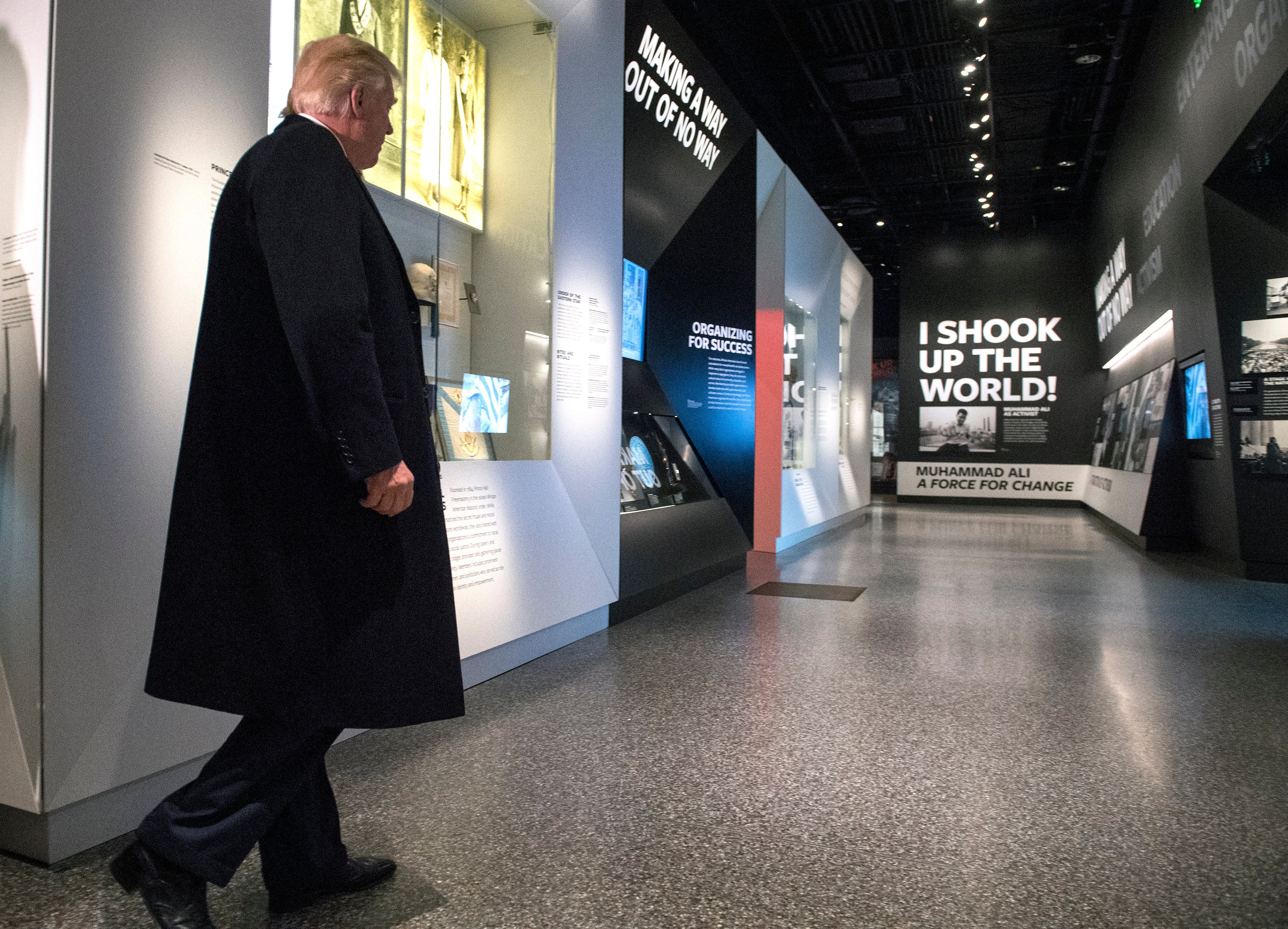
When the long-awaited National Museum of African American History and Culture threw open its doors last September, it became a “must see” for people across the country and world, who flocked to the site on the National Mall.
On Tuesday, Donald Trump became the second sitting U.S. president to visit the historic museum, which Barack and Michelle Obama helped open during a series of festivities in 2016.
Trump was accompanied by a group on Tuesday which included Dr. Ben Carson and his wife, Candy Carson; Sen. Tim Scott (R-SC); retired Alabama state legislator, Alveda King, sister of Dr. Martin Luther King, Jr.; White House staffer, Omarosa Manigault; and First Daughter, Ivanka Trump, according to the White House.
“It’s a privilege to be here today. This museum is a beautiful tribute to so many American heroes,” Trump said, ticking off names such as Sojourner Truth, Harriet Tubman, Frederick Douglass, Booker T. Washington, and Rosa Parks.
“I’m deeply proud that we now have a museum that honors the millions of African-American men and women who built our national heritage, especially when it comes to faith, culture and the unbreakable American spirit.”
Trump called the museum “amazing to see.”
Subscribe to our daily newsletter for the latest in hair, beauty, style and celebrity news.
“We did a pretty comprehensive tour but not comprehensive enough so I’ll be back. I could stay here for a lot longer, believe me. It’s really incredible,” he said, noting that First Lady Melania Trump visited last week and is “still talking about it.”
Dr. Lonnie Bunch, the museum’s founding director, led the morning tour. It comes days after Smithsonian officials announced that the copper penny-colored structure has topped the 1 million-visitor mark, a significant milestone reached in just about four months.
“It has truly become a place of healing, reconciliation, and celebration where people can embrace—not only African American history and culture, but how that layered history has shaped America’s identity,” said Bunch.
The museum was created by an Act of Congress in 2003 that came after Civil Rights icon, Rep. John Lewis (D-GA), former Oklahoma Congressman J.C. Watts and a bipartisan coalition spent years pushing legislation on Capitol Hill. The sweeping, light-filled museum boasts more than 3,000 objects, photographs, films and interactive exhibits that illustrate centuries of African-American history, as well as research and education programming.
Black women are represented on the museum’s executive staff and curatorial teams, and have played key leadership roles as advisors, donors, board members and more. Moreover, Black women—both legends and those who are lesser known—help tell the story of African-Americans and their families, educational, religious, civic, and social institutions. From Phillis Wheatley, formerly enslaved in Boston and the first Black woman to publish a book of poetry, to Dr. Mae Jemison, the first African-American woman to travel in space, there’s plenty of `her-story.’
Caprece Jackson-Garrett, one of those women, was thrilled to discover that the tiny “Happy I’m Nappy” button she designed in the 1980s to celebrate the natural hair movement had been donated and now sits in the museum’s collection.
Today, the public relations specialist views the button and its empowering slogan as an expression of “pure love” promoting Afrocentric identity.
“Small acts can lead to mass change. I believe the ancestors are telling us we need such movements right now,” said Jackson-Garrett, a proud mother of two.
Officials said the museum’s dwell time (the length of time a visitor stays in a museum) is unparalleled—averaging six hours or more on weekends. That compares to 75 minutes to two hours for most museums.
Trump reportedly stayed about 90 minutes; during that time, he described the need to fight “bigotry” and “hatred.”
He ended with a Martin Luther King Jr. quotation and spoke of how the nation has been divided a long time.
“We’re going to bring this country together.”
